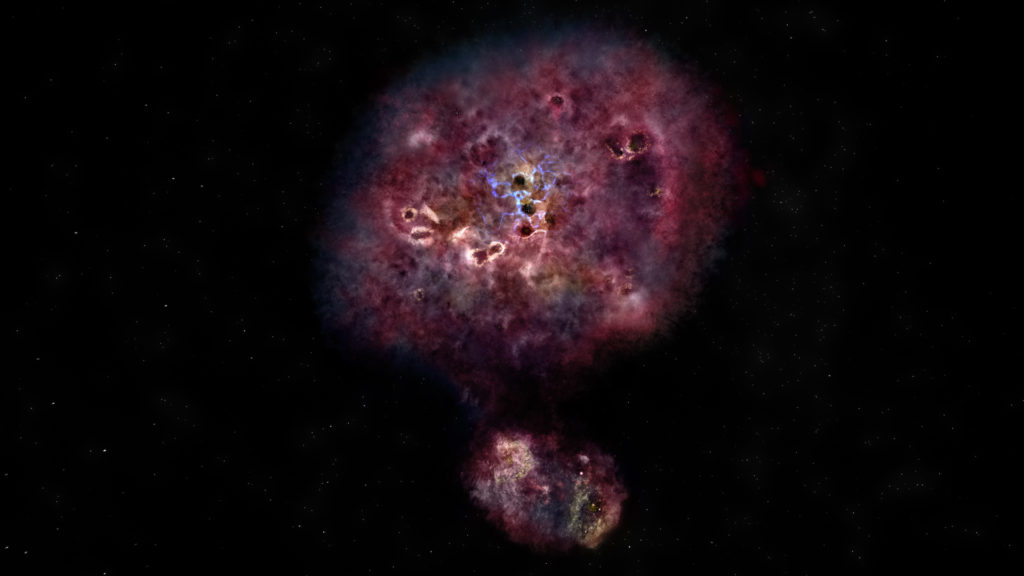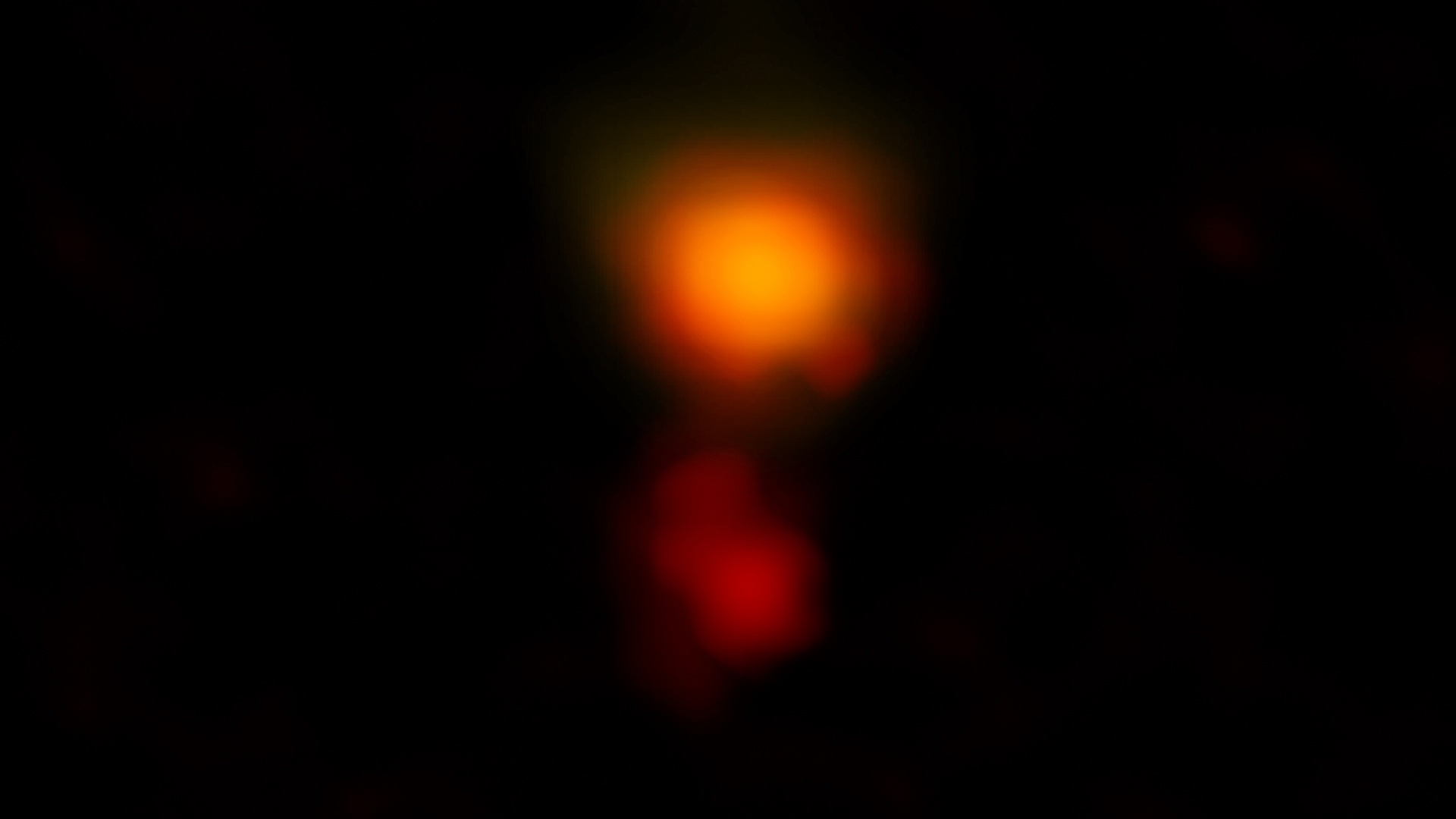Most Distant Star-Forming Galaxy Ever Seen Could Illuminate Universe's Past
Astronomers have captured the first image of the most distant star-forming galaxy ever observed with a telescope.
This monster galaxy, called MAMBO-9, was observed using the Atacama Large Millimeter/submillimeter Array (ALMA) in Chile. The scientists said they believe they caught a glimpse of the galaxy as it looked 970 million years after the Big Bang, which means this galaxy began during the early days of the universe, according to a statement from the National Radio Astronomy Observatory.
Recent observations show that MAMBO-9 contains massive amounts of gas and dust, suggesting that it is a giant stellar nursery. A galaxy this size can reach high star-formation rates, producing a few thousand times the mass of the sun each year, compared to our own galaxy, which forms three solar masses in a year. Given this extreme rate of star formation, galaxies like MAMBO-9 are believed to have influenced the evolution of the universe, according to the statement.
Related: Meet ALMA: Amazing Photos from Giant Radio Telescope
Galaxies are composed of billions of stars that shine light across the universe. However, surrounding gas and dust can mask that light. While astronomers first detected starlight from MAMBO-9 a decade ago, telescopes at the time were not sensitive enough to gauge how far away the galaxy was.
"These galaxies tend to hide in plain sight," Caitlin Casey, lead author of the study and an astronomer at the University of Texas at Austin, said in the statement. "We know they are out there, but they are not easy to find, because their starlight is hidden in clouds of dust."
However, ALMA observes radio wavelengths, meaning it can detect things that are otherwise difficult to see in visible wavelengths, such as star-forming galaxies that are usually obscured by clouds of dust. ALMA can also observe some of the most distant and oldest galaxies in the universe.
Breaking space news, the latest updates on rocket launches, skywatching events and more!
Using ALMA allowed researchers to observe MAMBO-9 and conclude that it is the most distant, dusty star-forming galaxy to be seen without the help of a gravitational lens. (That phenomenon occurs when a distant galaxy is distorted by the gravitational effects of a nearer, foreground galaxy. This galaxy acts like a lens and makes the distant source appear brighter, which means it is easier for telescopes to see, according to the statement.)
The astronomers were also able to measure the galaxy's mass. "The total mass of gas and dust in the galaxy is enormous: 10 times more than all the stars in the Milky Way," Casey said in the statement. "This means that it has yet to build most of its stars."
The ALMA observations also revealed a second component to the system, which suggests the galaxy is merging with another one, according to the statement.
The findings were published Dec. 11 in The Astrophysical Journal. The researchers said they hope to use ALMA to uncover additional distant and dusty galaxies, which could offer clues about the history of the universe.
"Dust is normally a byproduct of dying stars," Casey said. "We expect 100 times more stars than dust. But MAMBO-9 has not produced that many stars yet, and we want to find out how dust can form so fast after the Big Bang."
Observing more galaxies like MAMBO-9 will help scientists explain how common these massive galaxies are, how they formed in the early days of the universe and why they are so dusty, the researchers said.
- Young Stars Shine in Nearby Stellar Nursery Lupus 3
- Stellar Nursery in Orion's Dusty Heart Sparkles in Stargazer's Amazing Photo
- Stargazer Snaps Beautiful Image of Massive Stellar Nursery
Follow Samantha Mathewson @Sam_Ashley13. Follow us on Twitter @Spacedotcom and on Facebook.


Samantha Mathewson joined Space.com as an intern in the summer of 2016. She received a B.A. in Journalism and Environmental Science at the University of New Haven, in Connecticut. Previously, her work has been published in Nature World News. When not writing or reading about science, Samantha enjoys traveling to new places and taking photos! You can follow her on Twitter @Sam_Ashley13.


